
Design Strategies for Pediatric Spaces
Designing for young patients means inspiring confidence, encouraging playfulness and offering hope. To accomplish this, hospitals and practices need high-performing and flexible environments that can do it all: enable excellent medical care, integrate technology, encourage interaction and patient engagement, and instill a sense of comfort for all ages.
These nine fundamental ideas can help create intentionally designed experiences throughout the continuum of pediatric care, culled from the more than 20 years we have been studying best practices in providing care for kids.
1. Design for Engagement at all Levels
Positive distractions can engage families and patients at all levels. Provide space for patients and visitors, including age-appropriate diversion activities such as interactive multi-touch walls, playrooms for young patients and high-tech gathering spaces for teenagers. Craft an architectural language that children and adults intuitively understand. Use form, materials, color and texture to develop places in which patients and their families feel a sense of belonging and a more home-like atmosphere.
At Multicare Health System’s Mary Bridge Children’s Hospital in Tacoma, Washington, the goal was to create a familiar environment that supported the psychological and physiological well-being of the children. The interiors followed a maritime theme focused on the landmarks and life found in and around Washington’s Puget Sound. This theme is reflected in all areas of the expansion, from patient footwalls adorned with illustrations of coastal life to the play area, an aquarium and photographs of sea animals living in Tacoma’s Point Defiance Zoo.
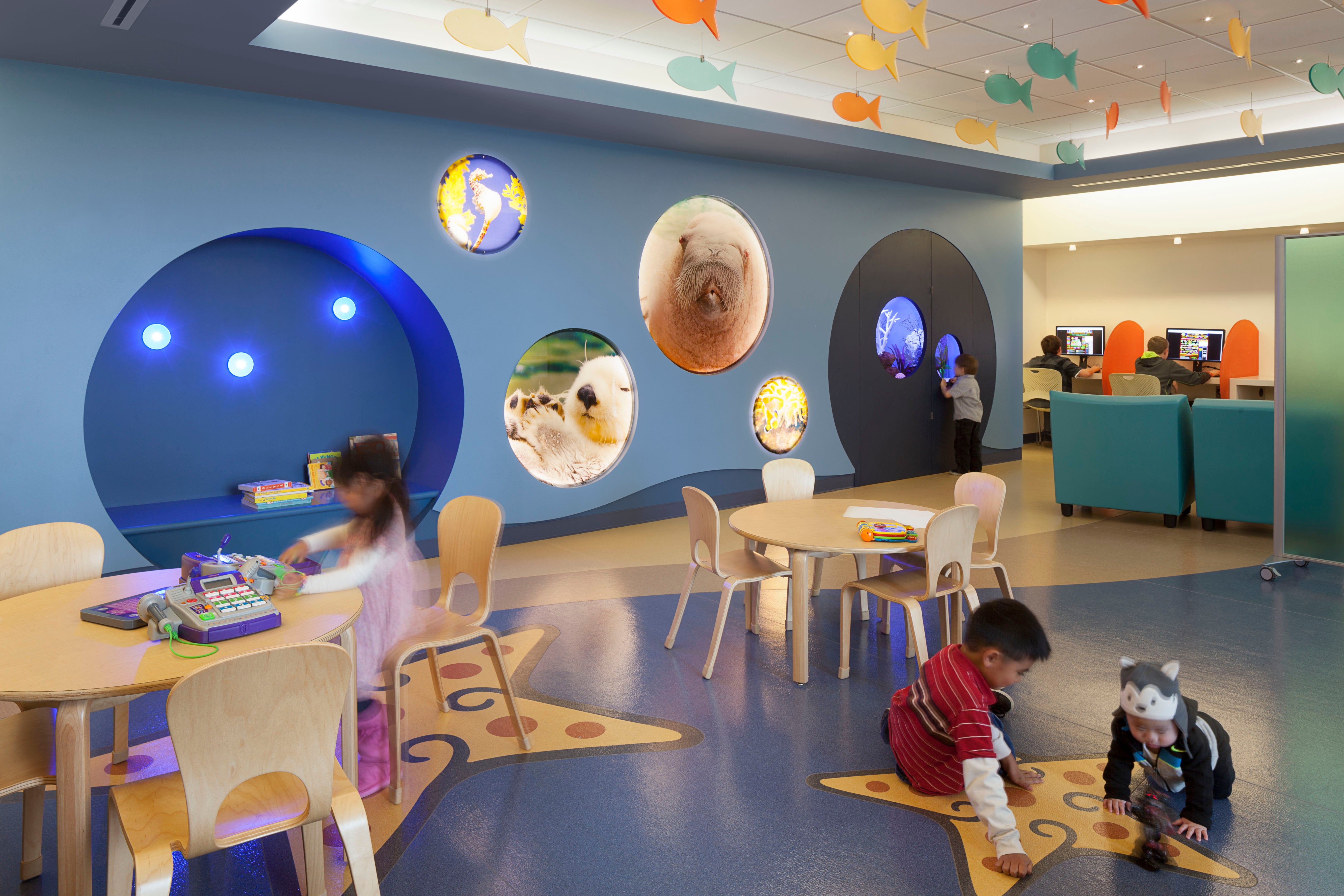
2. Keep Families in Mind
It’s critical to think of family members’ role as caregivers. Emphasize space for families including family sleep rooms, kitchens, laundry facilities, extra storage and other spaces that allow families to continue familiar and comforting routines for a child.
Provide technology so families can connect with work, home, school and classroom spaces that give children the opportunity to continue their education throughout the treatment process. For children who may feel more comfortable in the same bed with their parents, provide beds large enough for sharing.
In Omaha, Nebraska, Children’s Hospital & Medical Center brought high-quality medical care for children in a comfortable, adaptable place for family. Each clinic is designed as a module, including office space for one manager, an agile workspace for physicians and nurses and areas for clean and soiled supplies and storage.
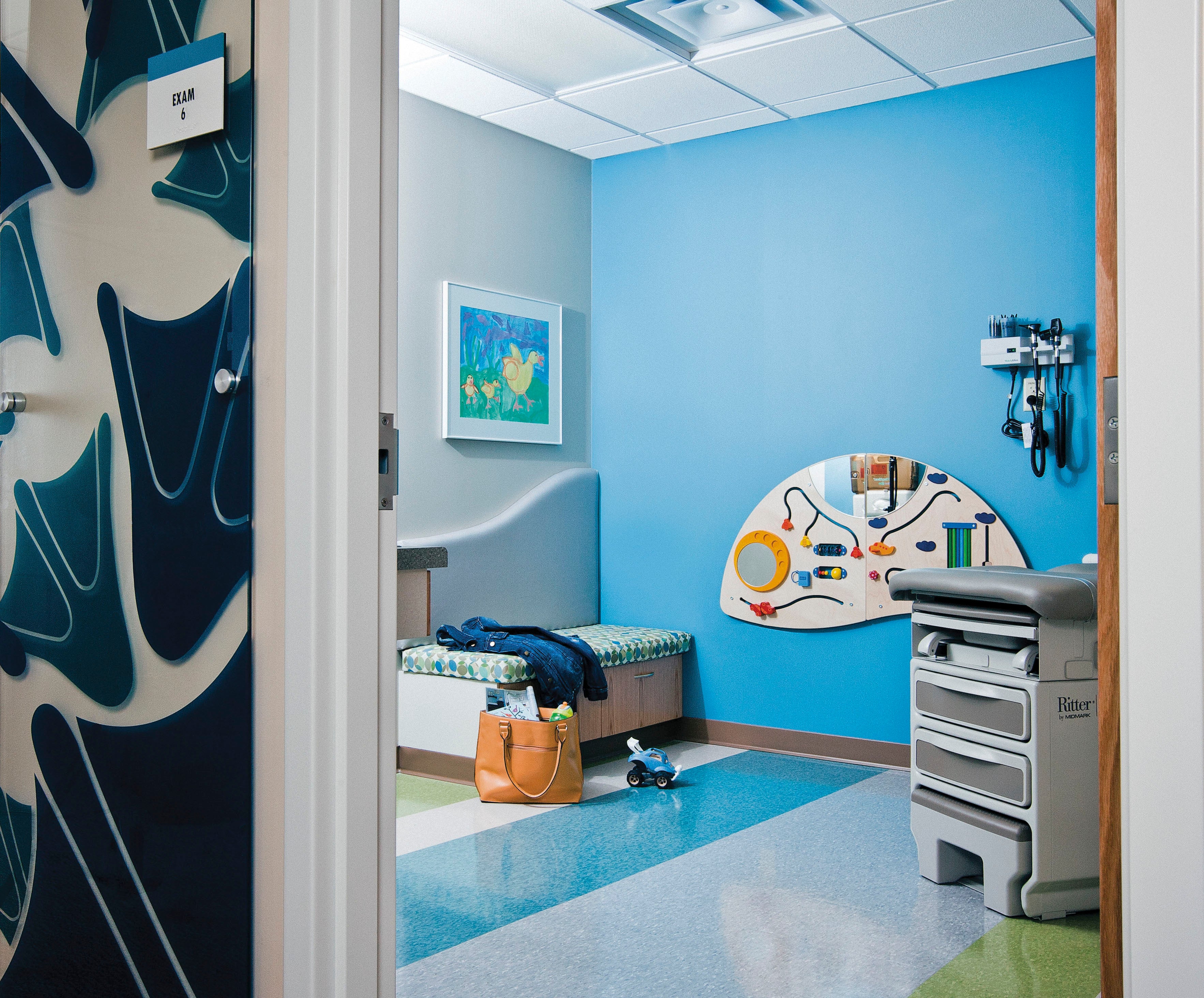
3. Create Neighborhoods
Pediatric patients have different social and privacy needs than adults and the organization of a unit should respond accordingly. The linear “hotel” layout of adult inpatient units lacks the environmental stimulation so important to a developing child.
Pediatric inpatient units that are organized around neighborhoods with their own identity and emotionally accessible parameters help to break down the scale of the unit — this reduces stress in patients, families and caregivers as they focus their energies on “living” in a more appropriately sized space.
Vidant Health’s James and Connie Maynard Children’s Hospital in Greenville, North Carolina, was designed as a sophisticated, yet playful healing environment using the latest medical technologies and best practices. With a theme of “through the eyes of a child,” the building flows in a nautical design that creates positive distractions meant to be calming, playful, educational, interactive and inspirational.
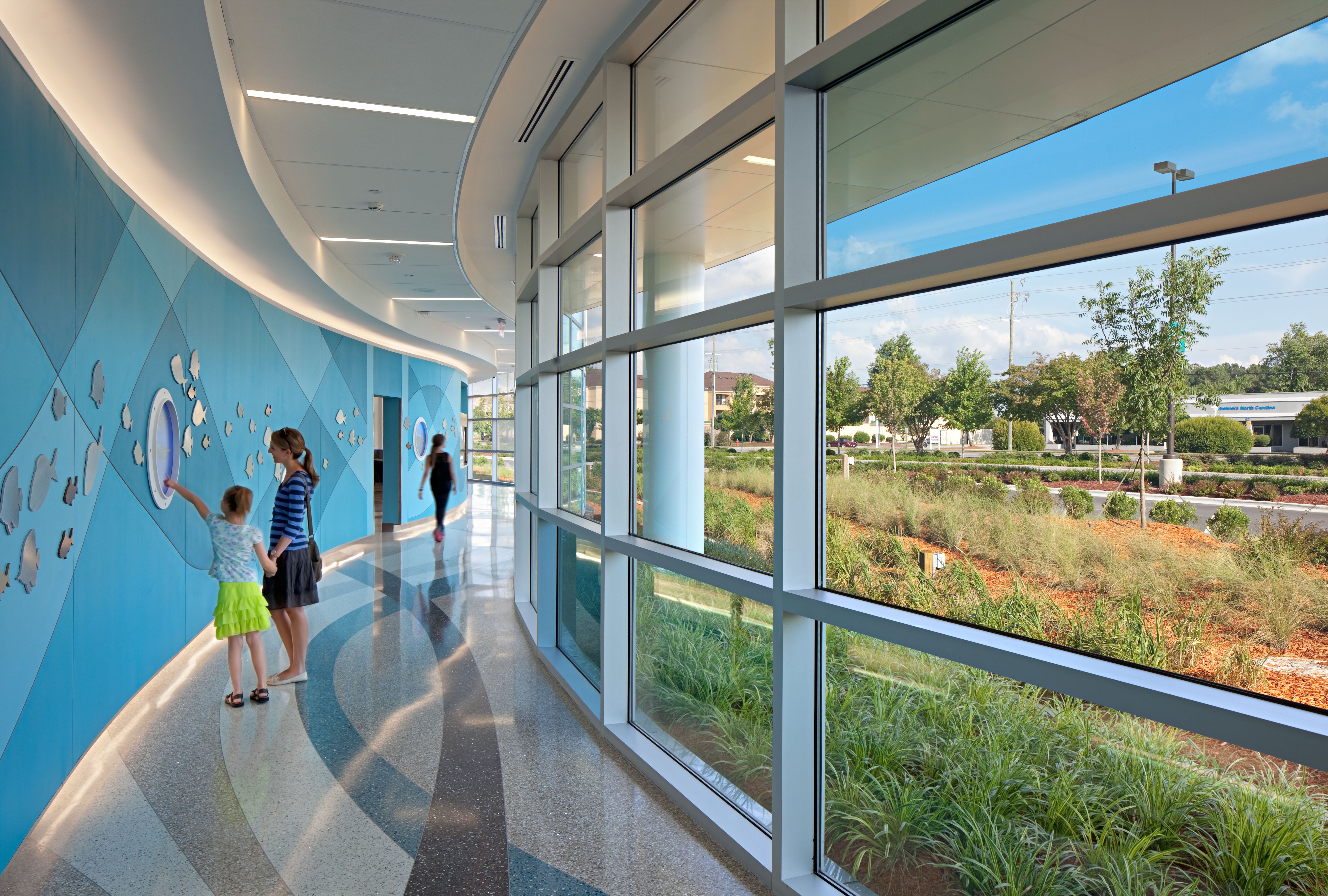
4. Integrate Flexible Spaces
Provide added convenience for families by incorporating interactive play areas for siblings and flexible exam rooms that accommodate families. Design patient rooms to be acuity adaptable to minimize the need for moving patients and causing disruption to families. Module clinics can be designed to be expanded as changes to the delivery of healthcare arrive, including new technologies and advancements.
5. Consider Efficiency, Safety and Security
Enhance process through design. Minimize risk and streamline processes to improve efficiency, productivity and the experience. Lean Six Sigma and other process tools can enhance the delivery of care.
Using proven, evidence-based design strategies can help develop a healing environment that will inform best practices into the future. Design procedure rooms and patient care rooms to be same handed whenever possible for a predictable and standardized environment, which can lead to reduced medical errors. Identify numerous scenarios to ensure safety and security is woven into the design from the beginning, including well-thought out and separated paths of on-stage and off-stage circulation, and appropriate precautions for infection prevention and control. Data-driven design and parametric modeling can ensure that departments are planned with maximum efficiency and minimize staff travel distances.
6. Promote Healing Environments
Understand the human impact of design. Consider daylighting, noise control and acoustics, air quality, privacy, social support and positive distractions in designing a healing environment. If possible, separate treatment areas from patient spaces to keep the patient room a safe haven. Consider patients with special needs, including children with autism, and provide low-stimulation healing environments.
Take healing outside. Children need access to outdoor therapy spaces that are playful and healing, calming and rejuvenating. Outdoor healing environments such as healing gardens and activity spaces create opportunities for improved indoor/outdoor connections that minimize stress for children and families — let kids be kids, even in a healthcare setting.

UCSF Benioff Children’s Hospital Oakland in Walnut Creek, California, is a satellite clinic facility that provides specialty services. One of the major challenges was to capture the essence of a children’s healthcare facility — beginning the moment the patient steps into the lobby. Each clinic occupies a major portion of the building and is renovated as a functional space, while creating a light-filled, playful and healing atmosphere for the young patients cared for in the facility.
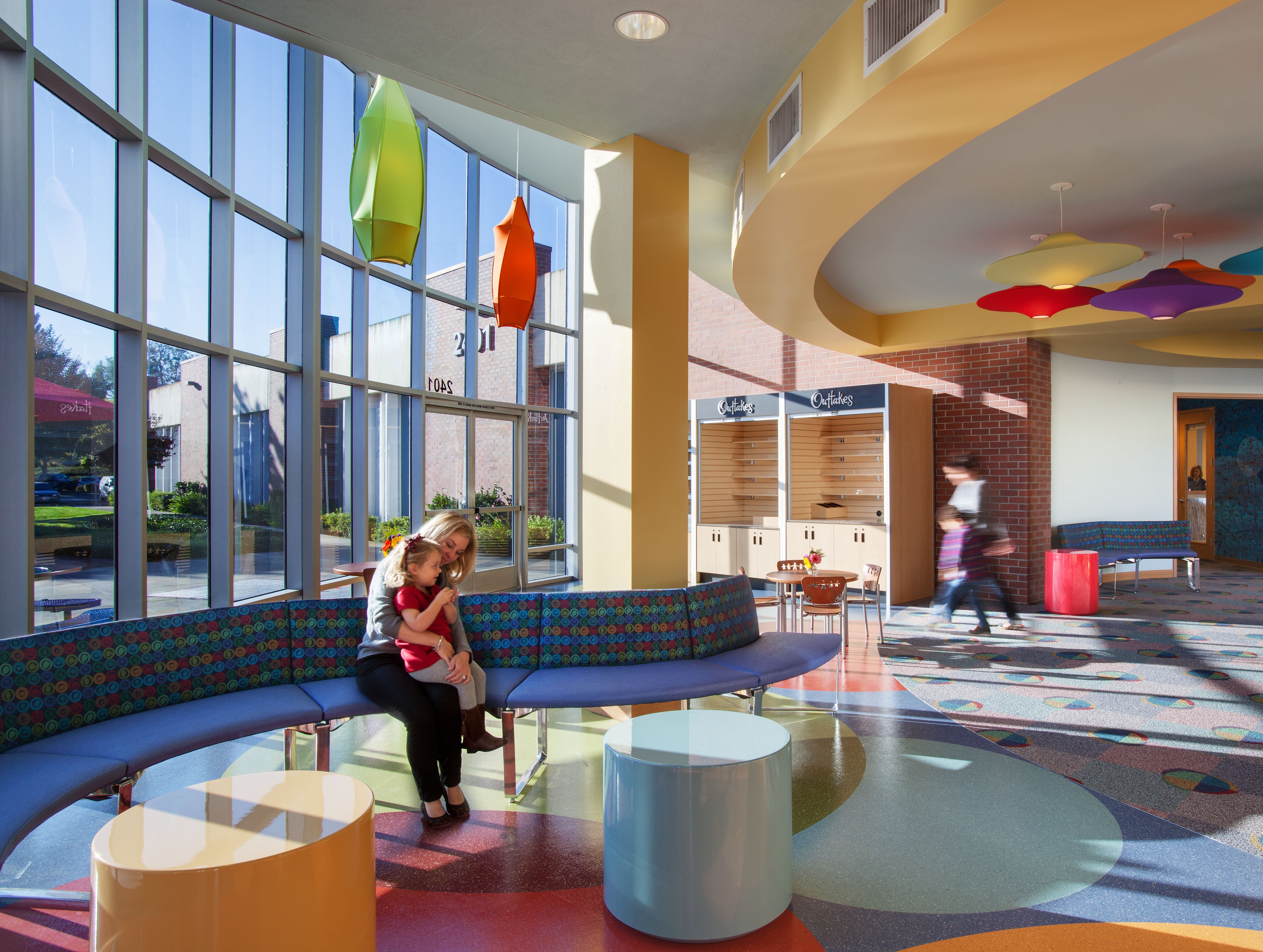
7. Support Caregivers
Recognize the demands we place on caregivers, acknowledge the emotional investment they make every day and provide areas for respite and recharge with natural light and consideration of circadian rhythms. Design the unit to allow nurses more time at the bedside, greater visibility throughout the unit, and quick and easy access to medication and supplies. Create highly collaborative environments to provide opportunities to enhance the knowledge transfer process among clinicians and patients, and, if appropriate, scientists.
8. Connect to Social Networks
Our children approach and interact with their social networks in ways never before possible, which means we need to create a world where being in the hospital does not mean children are separated from their circle of friends. Incorporate technology so that schools and social networks are brought into the room in full living color, allowing participation and fostering social identity. Here, a child’s life is not “interrupted” by a clinical episode.
Footwalls play an important role in this new environment. Consider one with a screen that can switch from developing an app one minute to a dashboard of the patient’s health the next. But connectivity will be more than virtual. These networks will demand a physical presence as the hospital becomes social space, transforming a once clinical area into a community center. Areas on the unit should be able to host birthday parties, play dates, study sessions and the myriad of group activities that are part of everyday life.
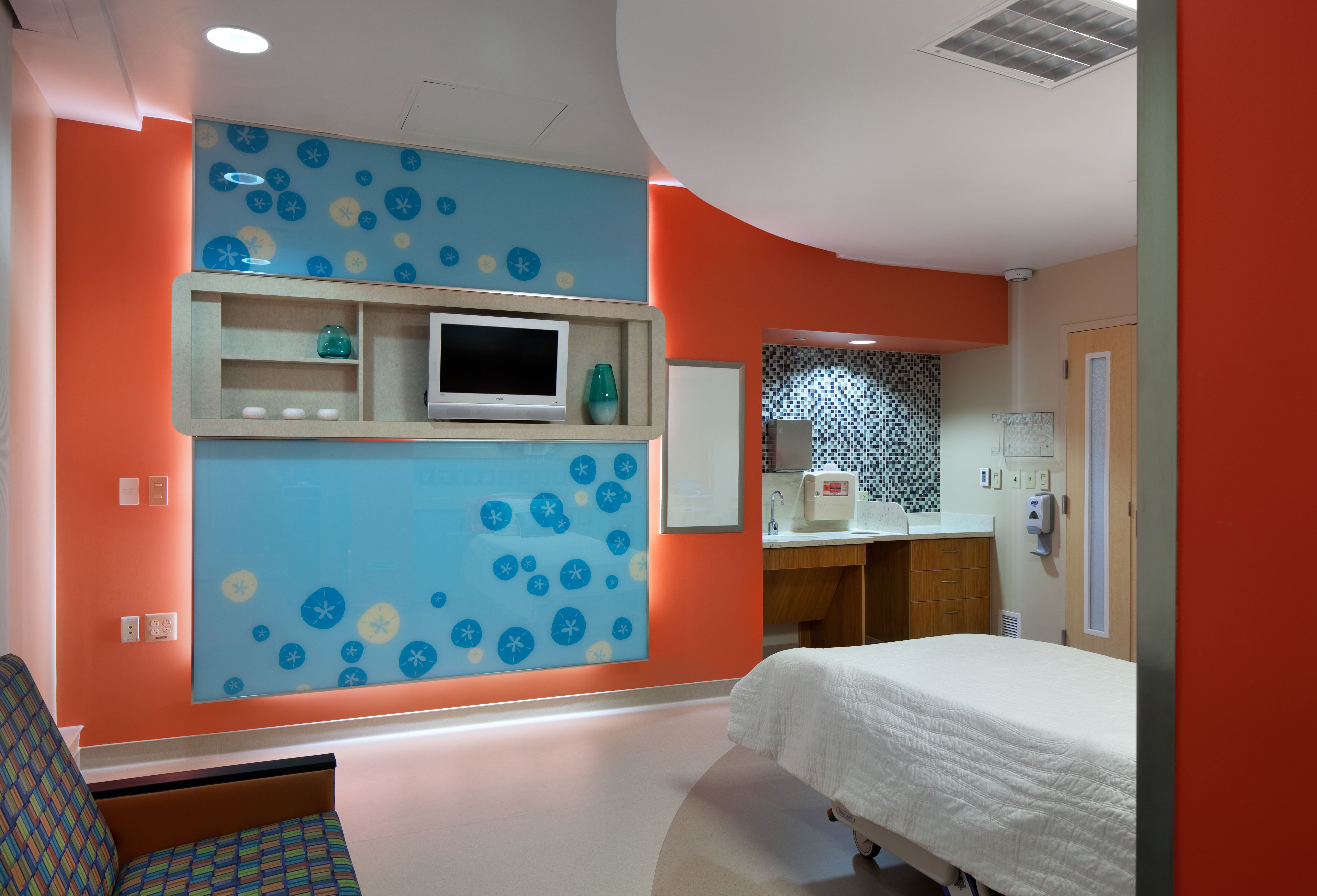
9. Consider Population Health Impacts
Multidisciplinary space is also needed to support programs that draw in community organizations, religious leaders, educators, police and safety groups. Activities for these groups can include personal or group religious services, classes on the dangers of alcohol and substance abuse among adolescents and teens, educational sessions on mental and behavioral health services to raise awareness. College admissions counselors can host interviews with prospective applicants and emergency response personnel can expand their educational reach through dialogues on public safety.
Health organizations that create space and opportunities for these types of activities will find greater success in their population health initiatives and reinforce the integration of health into “normal” life for their patients and families.

